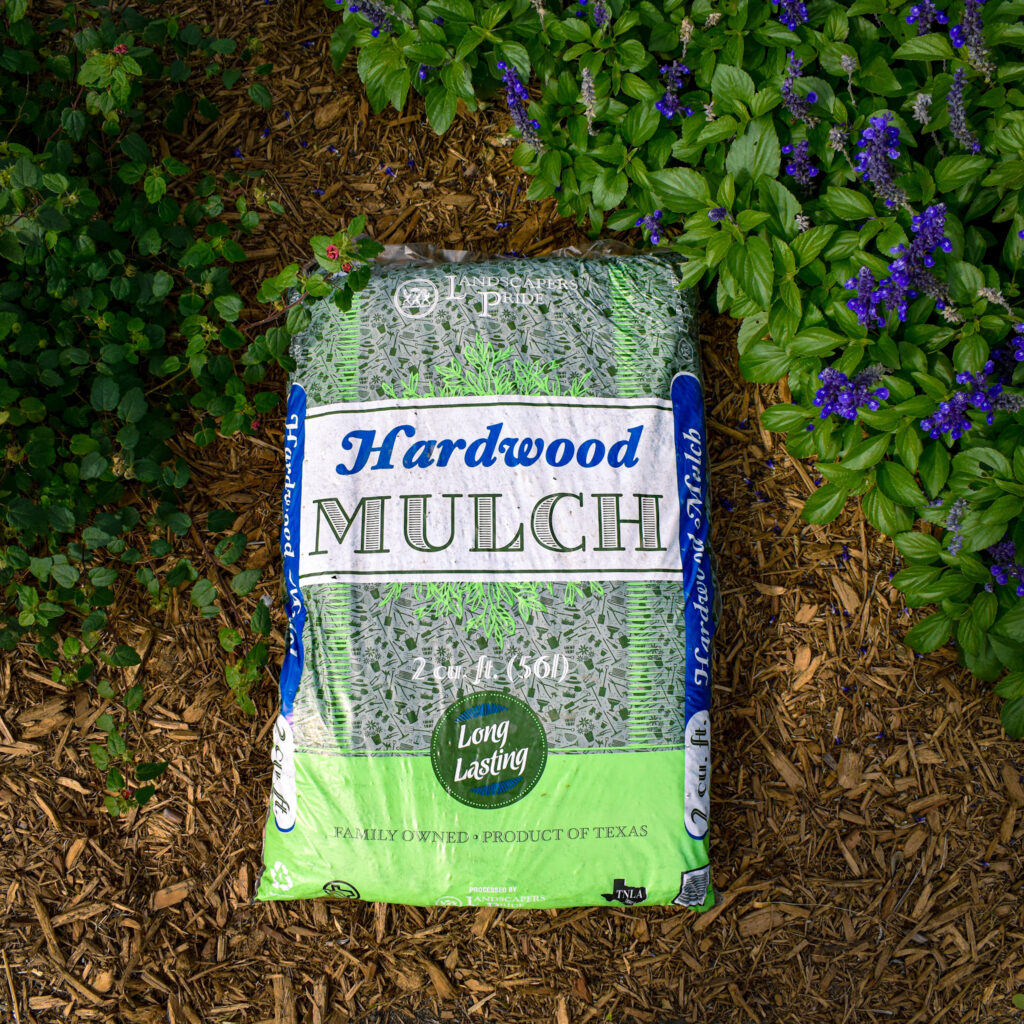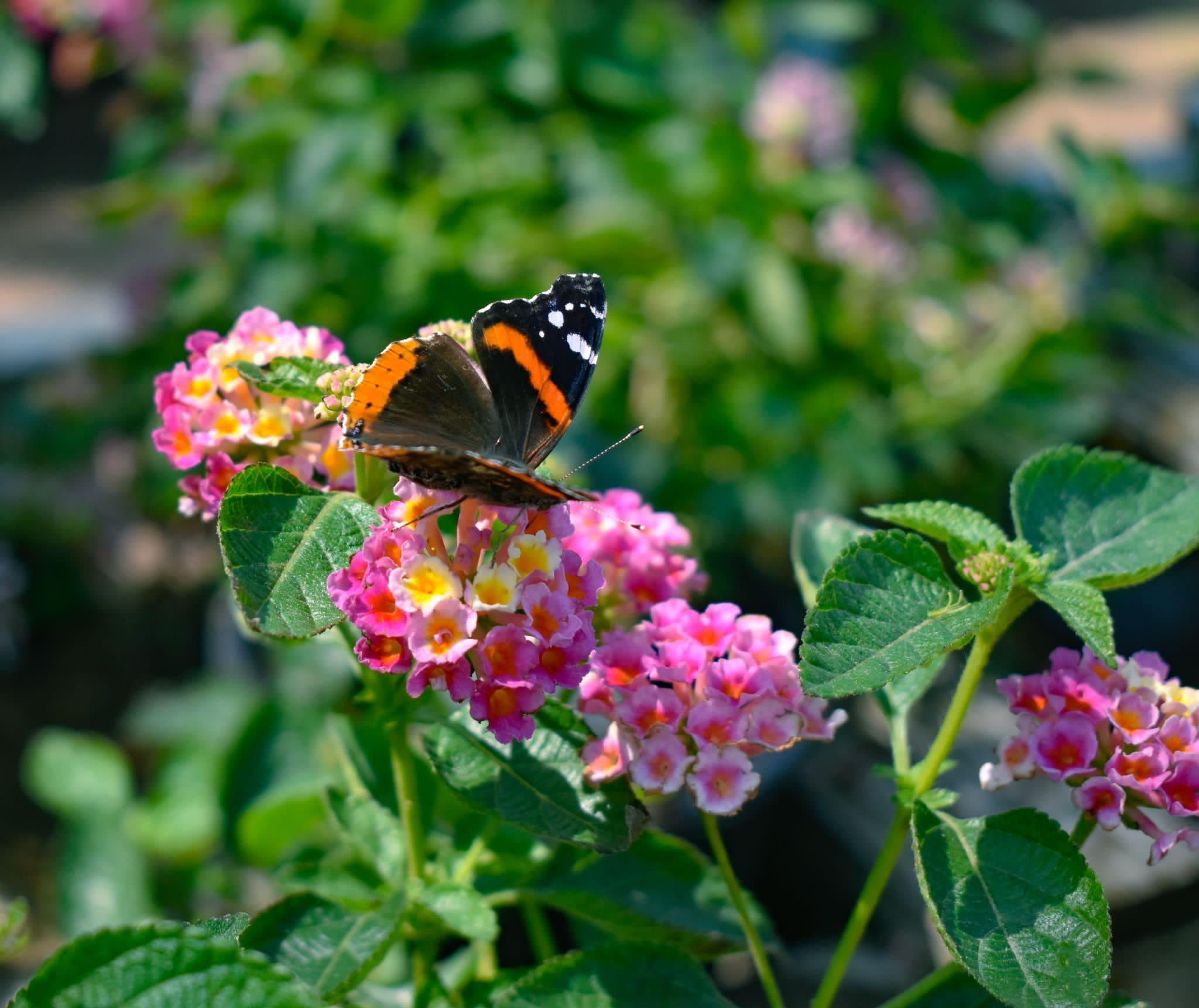Here’s to summer garden fun! We’re making the transition to warmer weather with some intermittent rainfall and lots of good energy in the garden. Here are our top priorities this month, including what to plant, how to adjust watering, what to watch out for, and how to keep plant roots cool and happy.
1. Plant Summer-Loving Plants!

So many of our favorite plants for South Texas don’t just tolerate warm weather, they only begin to thrive and look their best in the summer. Think of blooming perennials like Firebush, Esperanza, and Pride of Barbados for awesome summer impact. Think of big purslane hanging baskets, Gomphrena, and Periwinkles for bursts of bright color. And browse our Texas native plant section for plants and trees that have thrived through hundreds and even thousands of Texas summers. If you’re still wanting to plant food, you can do that too – okra, basil, thyme, watermelon, peppers, black-eyed peas and more should be planted in June.
2. Keep Roots Cool with Mulch

A good mulch layer (2-3″ deep) has so many benefits. It looks amazing, keeps weeds down, helps retain moisture, adds organic matter to the soil, AND keeps plant roots nice and cool in the summer. Bartlett Tree Research Laboratories shared amazing results with us from a mulch study they conducted in San Antonio. Soil temperatures were measured at 6″ deep (where plant roots live) on a 105 F summer day. Bare soil, 6″ down was 102 F. Soil under grass was 92 F. Soil beneath a 3″ layer of mulch was only 76 F!! Mulch for the win!
3. Water Low & Slow

We’re not talking about BBQ, although that sounds good too… We’re talking about watering low, as in as in low to the ground to avoid evaporation, and slow as in not with your hose open full-blast. This helps decrease runoff and get more water down to the roots. Consider setting up your own automatic drip irrigation system – they’re easy to DIY and they operate on the low & slow principle. Also, be sure to use the cycle & soak method, which simply means water once, let it soak in for several minutes, then come back and water again. This makes sure you’re pushing water down deep.
Pro tip: Use a moisture meter in your landscape beds and pots! We carry them for around $10 and can show you how easy they are to use. They have a long soil probe that tells you whether you actually have good moisture (or too much) down deep where it’s needed. They’ve saved many plants!
4. Watch for Summer Bugs, Critters, and Plant Disease

Yes, bad bugs will be around more during the Summer, but don’t treat unless there’s significant damage. We can help identify the pest and if/how to treat. You don’t want to kill too many good bugs while trying to take care of the bad bugs! If you see brown areas in the lawn that are easily pulled up, it’s usually a sign of grubs eating the roots of your grass. You can control grubs with Bonide Insect and Grub Control. Chinch bugs love hot dry areas in lawns. They make the lawn look dried out along sidewalks and pavement. Spot-treat those areas with Cyonara in easy ready-to-spray bottles. For organic control, use Spinosad or Diatomaceous Earth. We’ve also seen a lot more caterpillars than usual this spring. They’re commonly found munching on veggie gardens, but this year we’ve seen them on Gomphrena and Dichondra! Check out these big Sweet Potato Hornworms that Jesse found eating his Dichondra at night! Not too common to see, but it makes sense since dichondra is in the sweet potato family. Just a few caterpillars can be relocated, but if you have a lot destroying your plants, treat with organic Bt in liquid spray or powder form.
5. Garden In Style Indoors with New Houseplants

We just restocked the greenhouse with all kinds of unique and classic houseplants looking for their forever homes! Time to work on your collection! We can help you determine the best houseplants for different areas and different lighting in your home. Once again – invest in a moisture meter for your houseplants, too. In our experience, the main cause of houseplant death is too much love aka too much water. Keep in mind that houseplants can also be sensitive to chemicals in treated tap water. We use as much A/C condensate, rainwater, and water from our dehumidifier as we can to water houseplants and keep them looking their best here at Gill’s.



Reader Interactions